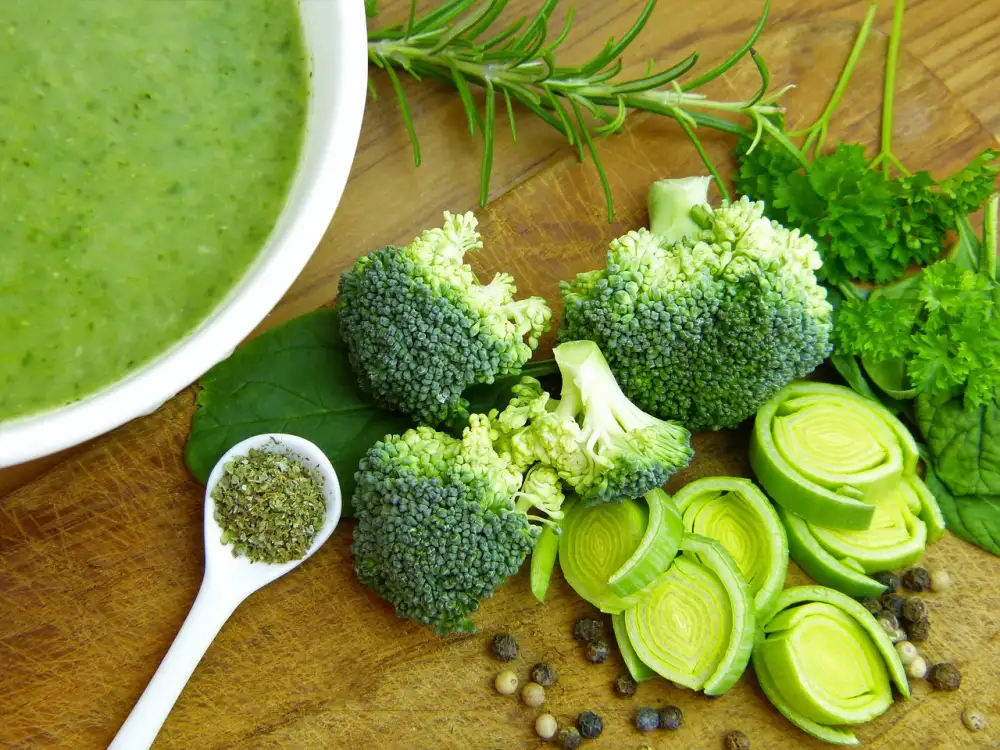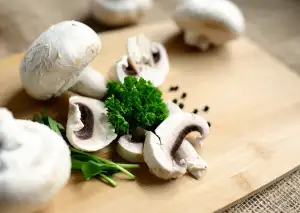Wholesome and Hearty Vegetable Soup Recipe: A Burst of Flavor and Nutrients

Vegetable soup is a comforting and nourishing dish that has been enjoyed by people all over the world for centuries. It is a versatile and flexible recipe that can be customized to suit individual tastes and dietary preferences. Packed with an array of vegetables, this soup is not only delicious but also a great way to incorporate more nutrients into your diet. Whether you are looking for a hearty meal or a light appetizer, vegetable soup is the perfect choice. In this article, we will explore the ingredients, preparation methods, and variations of this wholesome soup, as well as its nutritional benefits. So, get ready to warm your soul and tantalize your taste buds with our wholesome and hearty vegetable soup recipe!
Ingredients for Vegetable Soup
To make a delicious and nutritious vegetable soup, you will need a variety of fresh ingredients. Here are the key components that will bring flavor and texture to your soup:
1. Vegetables: Choose a mix of colorful vegetables such as carrots, celery, onions, bell peppers, zucchini, and tomatoes. These veggies will provide vitamins, minerals, and fiber.
2. Broth: Use vegetable broth or stock as the base for your soup. It adds depth of flavor and enhances the taste of the vegetables.
3. Herbs and Spices: Add aromatic herbs like thyme, rosemary, or bay leaves to infuse the soup with fragrance. Don't forget to season with salt and pepper for balance.
4. Garlic and Onion: These staples add a savory note to the soup and complement the flavors of other ingredients.
5. Protein (optional): If desired, include protein-rich ingredients like beans or lentils to make the soup more filling.
6. Olive Oil: A drizzle of olive oil at the end can enhance the richness of flavors in your vegetable soup.
Remember that these ingredients can be adjusted based on personal preference or dietary restrictions. The key is to choose fresh produce and high-quality broth for a wholesome and hearty vegetable soup experience.
Step-by-Step Instructions for Making Vegetable Soup
1. Start by preparing the vegetables. Wash and chop them into bite-sized pieces. Common vegetables used in vegetable soup include carrots, celery, onions, potatoes, and tomatoes.
2. Heat a large pot over medium heat and add some olive oil. Once the oil is hot, add the chopped onions and sauté until they become translucent.
3. Add the remaining vegetables to the pot and stir well to combine. Let them cook for a few minutes until they start to soften.
4. Pour in vegetable broth or water to cover the vegetables completely. Bring the mixture to a boil, then reduce the heat to low and let it simmer for about 20-30 minutes until the vegetables are tender.
5. Season the soup with salt, pepper, and any other desired herbs or spices such as thyme or bay leaves. Stir well and taste to adjust the seasoning according to your preference.
6. If you prefer a creamy texture, use an immersion blender or transfer a portion of the soup into a blender and puree until smooth. Return it back to the pot and mix well.
7. Optional: Add cooked beans or grains like lentils or barley for added protein and texture.
8. Let the soup simmer for another 5-10 minutes to allow all flavors to meld together.
9. Serve hot with crusty bread or crackers on the side for a complete meal.
By following these simple steps, you can easily create a delicious and nutritious vegetable soup that will warm your soul on chilly days!
Tips for Enhancing the Flavor of Vegetable Soup
1. Use homemade vegetable broth: Making your own vegetable broth adds depth and richness to the soup. Simmer a combination of vegetables like onions, carrots, celery, and herbs in water for a flavorful base.
2. Sauté the vegetables: Before adding them to the soup, sauté the vegetables in olive oil or butter. This step caramelizes their natural sugars, intensifying their flavors.
3. Add herbs and spices: Experiment with different herbs and spices to enhance the taste of your vegetable soup. Common options include thyme, rosemary, bay leaves, cumin, paprika, or turmeric.
4. Incorporate umami-rich ingredients: Boost the savory taste by adding umami-rich ingredients like mushrooms, soy sauce, tomato paste, or miso paste. These ingredients add depth and complexity to the soup's flavor profile.
5. Finish with acid: A splash of lemon juice or vinegar at the end brightens up the flavors and adds a refreshing tang to your vegetable soup.
6. Don't forget salt and pepper: Seasoning is key to bringing out the flavors in any dish. Taste as you go and adjust with salt and pepper accordingly.
By following these tips, you can elevate the flavor of your vegetable soup from ordinary to extraordinary!
Variations of Vegetable Soup
1. Minestrone: This Italian classic is packed with vegetables like carrots, celery, tomatoes, and beans. Add some pasta or rice to make it heartier.
2. Creamy Potato and Leek: A comforting option, this soup combines tender potatoes and sautéed leeks in a creamy broth.
3. Spicy Thai Curry: For those who crave bold flavors, try adding Thai curry paste, coconut milk, and a medley of colorful vegetables for a spicy twist.
4. Moroccan Harira: This flavorful soup features chickpeas, lentils, and warming spices like cumin and cinnamon. Serve with a squeeze of lemon for extra zing.
5. Mexican Tortilla Soup: A fiesta in a bowl! This soup is made with tomatoes, corn, black beans, and topped with crispy tortilla strips and avocado slices.
6. Asian-inspired Ginger Garlic Soup: Infused with ginger and garlic, this soup is light yet full of flavor. Add mushrooms or tofu for an extra boost of protein.
These variations allow you to explore different cuisines while still enjoying the wholesome goodness of vegetable soup. Get creative in the kitchen and experiment with your favorite ingredients to create your own unique version!
Serving and Storing Vegetable Soup
Once your vegetable soup is ready, it's time to serve and enjoy this wholesome dish. Ladle the soup into bowls and garnish with fresh herbs or a drizzle of olive oil for added flavor. Serve it alongside some crusty bread or a side salad for a complete meal.
If you have any leftovers, store them in an airtight container in the refrigerator. Vegetable soup can be kept for up to 3-4 days, but make sure to reheat it thoroughly before consuming. You can also freeze the soup in individual portions for longer storage. Just thaw and reheat when you're ready to enjoy it again.
Remember, vegetable soup tends to thicken as it sits, so you may need to add some water or broth when reheating to achieve the desired consistency. With proper storage and reheating techniques, you can savor the flavors of your homemade vegetable soup even on busy days.
Nutritional Benefits of Vegetable Soup
Vegetable soup is not only delicious but also packed with numerous health benefits. It is a great way to incorporate a variety of vegetables into your diet, ensuring you get a wide range of essential nutrients.
Firstly, vegetable soup is low in calories and fat, making it an ideal choice for those looking to maintain or lose weight. The high fiber content keeps you feeling full for longer, reducing the temptation to snack on unhealthy foods.
Secondly, the abundance of vegetables in the soup provides a rich source of vitamins and minerals. These include vitamin C, which boosts the immune system, vitamin A for healthy skin and eyesight, and potassium for maintaining healthy blood pressure levels.
Additionally, vegetable soup is a great source of antioxidants that help protect against cell damage and reduce the risk of chronic diseases such as heart disease and certain types of cancer.
Moreover, the cooking process involved in making vegetable soup helps break down some tough fibers in vegetables, making their nutrients more easily absorbed by the body.
In conclusion, vegetable soup is not only a tasty dish but also a nutritious one. By incorporating a variety of vegetables into your soup, you can enjoy the numerous health benefits it offers while satisfying your taste buds. So why not whip up a batch of wholesome vegetable soup today?
In conclusion, vegetable soup is not only a delicious and comforting dish but also a powerhouse of nutrients. Its versatility allows for endless variations, making it suitable for all taste preferences. By using fresh and seasonal vegetables, you can create a wholesome and hearty soup that is packed with vitamins, minerals, and fiber. Whether enjoyed as a light lunch or a satisfying dinner, vegetable soup is an excellent choice for those looking to incorporate more vegetables into their diet. So why not grab your favorite pot and start simmering up a batch of this flavorful and nutritious soup today? Your taste buds and body will thank you!
Published: 18. 12. 2023
Category: Recipes



